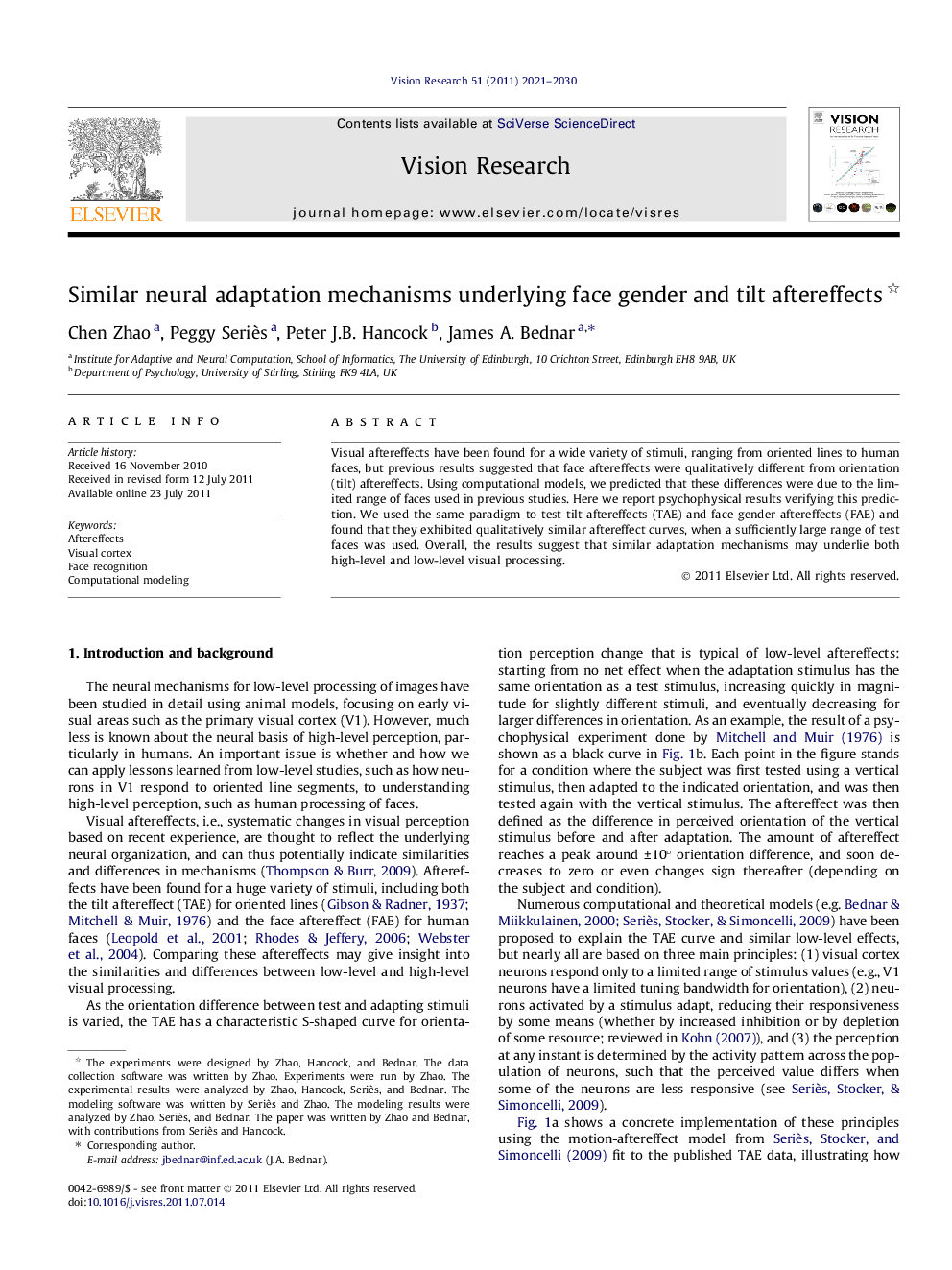| Article ID | Journal | Published Year | Pages | File Type |
|---|---|---|---|---|
| 4034257 | Vision Research | 2011 | 10 Pages |
Visual aftereffects have been found for a wide variety of stimuli, ranging from oriented lines to human faces, but previous results suggested that face aftereffects were qualitatively different from orientation (tilt) aftereffects. Using computational models, we predicted that these differences were due to the limited range of faces used in previous studies. Here we report psychophysical results verifying this prediction. We used the same paradigm to test tilt aftereffects (TAE) and face gender aftereffects (FAE) and found that they exhibited qualitatively similar aftereffect curves, when a sufficiently large range of test faces was used. Overall, the results suggest that similar adaptation mechanisms may underlie both high-level and low-level visual processing.
► Face gender aftereffect (FAE) shows S-shaped curve like the tilt aftereffect (TAE). ► Neurons selective for face gender appear tuned to a broad but specific range of faces. ► Results suggest that low-level and high-level aftereffects reflect similar mechanisms. ► Difficult to reconcile with prevailing “norm-based” theory of face encoding.
